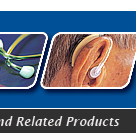|
Digital Hearing Aids
Reviews & Information
Digital hearing aids first entered the market in the late 1980′s when digital signal processor (DSP) chips became small enough to fit within the confines of a hearing aid unit. Still, the devices were larger than the typical analog devices of that time.
It wasn’t until near the turn of the century when these devices were re-introduced into the market using the latest technology to produce a full range of hearing appliances that fit inside the ear or behind the ear.
The outstanding performance of these devices combined with better battery use to make them an instant hit in the market.
Analog hearing aids work by simply taking the incoming sound waves and making them bigger.
This technique worked, but had the disadvantage of amplifying extraneous, distracting noises along with the sounds people actually needed to hear.
Digital hearing aids work by breaking incoming sounds into digital steps or bits of information that can be processed by electronics, making them fully programmable and capable of reducing background noise, managing feedback and allowing for customized settings for various listening environments.
By processing sounds through discrete channels, digital gain processing technology makes it possible to fine tune hearing aid performance for each user’s preference so they can adjust their hearing aid to amplify certain sounds they have trouble hearing and to reduce various sounds to which they are oversensitive, making their hearing experience more natural than ever before.
The emergence of wireless technology has made it possible for hearing aid users to control their device via a discreet remote control.
With this device, the hearing appliance can be turned on or off, or the volume can be adjusted up and down and the different pre-programmed and custom settings can be selected or changed.
Other features such as digital speech enhancement also help make digital hearing aids better to use.
Digital hearing appliances are made by most of the major hearing appliance manufacturers.
Rextron’s Insite, Cobalt, Gem and other models; Siemens’ Pure, Life iMini and other models; Belton’s True, Touch, Reach and other models are just a few of the digital hearing aids that are currently on the market.
The advent of digital hearing aids has made it easier than ever to cope with hearing loss.
Digital technology has also made it possible to scale hearing devices to fit individual budgets and needs to find a customizable hearing aid solution for every hearing patient.
Top Digital Hearing Aids Offers: Updated |
Learn More: VA Hearing Aids Information




